Optimal testosterone symptoms are the physical and mental signs that indicate your body has reached a healthy hormonal balance. These symptoms often manifest as improvements in various aspects of your daily life, from increased energy and muscle strength to enhanced mood and cognitive function. Understanding these signs is crucial for both men and women seeking to optimize their health and well-being through hormone therapy.
Table of Contents
Key Takeaways
- Optimal testosterone levels are crucial for overall health in both men and women
- Common symptoms of balanced testosterone include increased energy, improved muscle mass, and enhanced libido
- Mood stability, better sleep quality, and sharper cognitive function are also indicators of optimal testosterone
- Regular blood tests can help monitor and maintain ideal testosterone levels
- Lifestyle factors like diet, exercise, and stress management play a significant role in testosterone optimization
Understanding Optimal Testosterone Symptoms Role in the Body

Testosterone is a vital hormone that plays a significant role in various bodily functions. While often associated primarily with men, it’s important to note that women also produce testosterone, albeit in smaller amounts. This hormone affects everything from muscle mass and bone density to libido and mood regulation.
The Importance of Balanced Testosterone Levels
Maintaining balanced testosterone levels is key to experiencing optimal health benefits. When testosterone is at its ideal level, individuals often report feeling more vibrant, energetic, and focused. However, it’s important to remember that “optimal” can vary from person to person, depending on factors such as age, gender, and overall health status.
How Testosterone Optimal testosterone symptoms Levels Change Over Time
As we age, it’s natural for testosterone levels to decrease. This decline can begin as early as age 30 in men and can accelerate during menopause in women. Understanding this natural progression can help individuals recognize when they might benefit from hormone optimization therapy.
Physical Optimal Testosterone Symptoms Levels

When testosterone levels are optimized, several physical changes become apparent. These changes can significantly improve quality of life and overall well-being.
Increased Muscle Mass and Strength
One of the most noticeable signs of optimal testosterone levels is an increase in muscle mass and strength. This doesn’t mean you’ll suddenly look like a bodybuilder, but you may find it easier to build and maintain muscle through regular exercise.
Improved Body Composition
Optimal testosterone levels can lead to a more favorable body composition. This often means a decrease in body fat, particularly around the midsection, and an increase in lean muscle mass. Many individuals report feeling more toned and defined when their testosterone levels are balanced.
Enhanced Physical Endurance
With optimized testosterone, many people experience improved physical endurance. This can manifest as being able to work out for longer periods without feeling exhausted or recovering more quickly from intense physical activities.
Better Bone Density
Testosterone plays a crucial role in maintaining bone density. When levels are optimal, individuals may experience stronger bones and a reduced risk of osteoporosis, especially as they age.
Mental and Emotional Indicators of Balanced Testosterone

The benefits of Optimal testosterone symptoms levels extend beyond physical changes. Many individuals report significant improvements in their mental and emotional well-being.
Improved Mood and Reduced Anxiety
Balanced testosterone levels often correlate with a more stable mood and reduced feelings of anxiety. Many people report feeling more relaxed and better equipped to handle stress when their hormones are optimized.
Enhanced Cognitive Function
Optimal testosterone symptoms levels can lead to improvements in various aspects of cognitive function. This may include better memory, increased focus, and sharper mental clarity.
Increased Confidence and Assertiveness
Many individuals with balanced testosterone levels report feeling more confident and assertive in their daily lives. This can translate to improved performance at work and in social situations.
Sexual Health and Optimal Testosterone

Testosterone plays a significant role in sexual health for both men and women. When levels are optimized, several improvements in this area may become apparent.
Enhanced Libido
One of the most commonly reported benefits of optimal testosterone levels is an increase in sex drive or libido. This can lead to improved sexual satisfaction and intimacy in relationships.
Improved Sexual Performance
For men, balanced testosterone levels can lead to better erectile function and overall sexual performance. Women may experience increased sensitivity and arousal.
Increased Fertility
Optimal testosterone levels can contribute to improved fertility in both men and women. For men, this may mean increased sperm production, while women may experience more regular ovulation.
Energy Levels and Sleep Quality
Testosterone plays a crucial role in regulating energy levels and sleep patterns. When optimized, individuals often notice significant improvements in these areas.
Increased Daytime Energy
Many people with balanced testosterone levels report feeling more energetic throughout the day. This can lead to increased productivity and a greater sense of vitality.
Improved Sleep Quality
Optimal testosterone can contribute to better sleep quality. This often means falling asleep more easily, staying asleep throughout the night, and waking up feeling more refreshed.
The Role of Diet and Exercise in Testosterone Optimization
While hormone therapy can be effective in optimizing testosterone levels, lifestyle factors also play a crucial role. Diet and exercise can significantly impact hormone production and balance.
Nutritional Considerations for Testosterone Health
A balanced diet rich in protein, healthy fats, and essential nutrients can support optimal testosterone levels. Some foods that may be particularly beneficial include:
- Lean meats and fish
- Eggs
- Nuts and seeds
- Leafy green vegetables
- Berries and citrus fruits
Exercise Routines for Hormonal Balance
Regular physical activity, particularly strength training and high-intensity interval training (HIIT), can help boost testosterone levels naturally. A balanced exercise routine might include:
- Weightlifting 3-4 times per week
- HIIT sessions 1-2 times per week
- Regular cardiovascular exercise
Monitoring and Maintaining Optimal Testosterone Levels
Achieving optimal testosterone levels is not a one-time event but an ongoing process that requires regular monitoring and adjustment.
The Importance of Regular Blood Tests
Regular blood tests are essential for monitoring testosterone levels and ensuring they remain within the optimal range. These tests can help healthcare providers make necessary adjustments to hormone therapy or lifestyle recommendations.
Working with Healthcare Professionals
Optimizing testosterone levels should always be done under the guidance of qualified healthcare professionals. They can help interpret test results, adjust treatment plans, and address any concerns or side effects.
Potential Risks and Side Effects of Testosterone Optimization
While there are many benefits to optimizing testosterone levels, it’s important to be aware of potential risks and side effects.
Understanding the Risks
Some potential risks associated with testosterone therapy include:
- Acne or oily skin
- Sleep apnea
- Enlarged prostate in men
- Increased risk of blood clots
Managing Side Effects
Working closely with a healthcare provider can help minimize and manage any side effects of testosterone optimization. Regular check-ups and open communication are key to a safe and effective treatment plan.
The Future of Testosterone Optimization
As research in hormone therapy continues to advance, new methods for optimizing testosterone levels are likely to emerge. Staying informed about these developments can help individuals make the best decisions for their health.
Emerging Therapies and Treatments
Researchers are exploring new delivery methods for testosterone therapy, as well as natural supplements that may help boost testosterone production. These advancements may offer more personalized and effective options for hormone optimization in the future.
The Role of Personalized Medicine
The future of testosterone optimization is likely to involve more personalized approaches, taking into account an individual’s unique genetic makeup, lifestyle factors, and health goals.
| Symptom | Optimal Testosterone | Low Testosterone |
|---|---|---|
| Energy Levels | High, sustained energy throughout the day | Fatigue, low stamina |
| Muscle Mass | Increased muscle mass, easier to build and maintain | Difficulty building muscle, loss of existing muscle |
| Mood | Stable, positive mood with reduced anxiety | Mood swings, irritability, depression |
| Libido | Strong sex drive, increased arousal | Low sex drive, difficulty with arousal |
| Cognitive Function | Sharp focus, good memory recall | Brain fog, difficulty concentrating |
| Age Range | Optimal Testosterone Range (ng/dL) for Men | Optimal Testosterone Range (ng/dL) for Women |
|---|---|---|
| 20-29 | 600-900 | 15-70 |
| 30-39 | 500-800 | 15-70 |
| 40-49 | 450-750 | 15-70 |
| 50-59 | 400-700 | 15-70 |
| 60+ | 350-650 | 15-70 |
Lifestyle factors that can help maintain optimal testosterone levels:
- Regular strength training exercises
- Adequate sleep (7-9 hours per night)
- Stress management techniques like meditation or yoga
- A balanced diet rich in protein and healthy fats
- Limiting alcohol consumption
- Avoiding excessive sugar intake
- Maintaining a healthy body weight
By understanding the symptoms of optimal testosterone levels and working closely with healthcare professionals, individuals can take proactive steps toward achieving hormonal balance and improved overall health. Feel free to visit our website or contact us now to take the first step towards a healthier, more active lifestyle! Remember, the journey to optimal testosterone levels is unique for each person and requires patience, consistency, and ongoing care.


